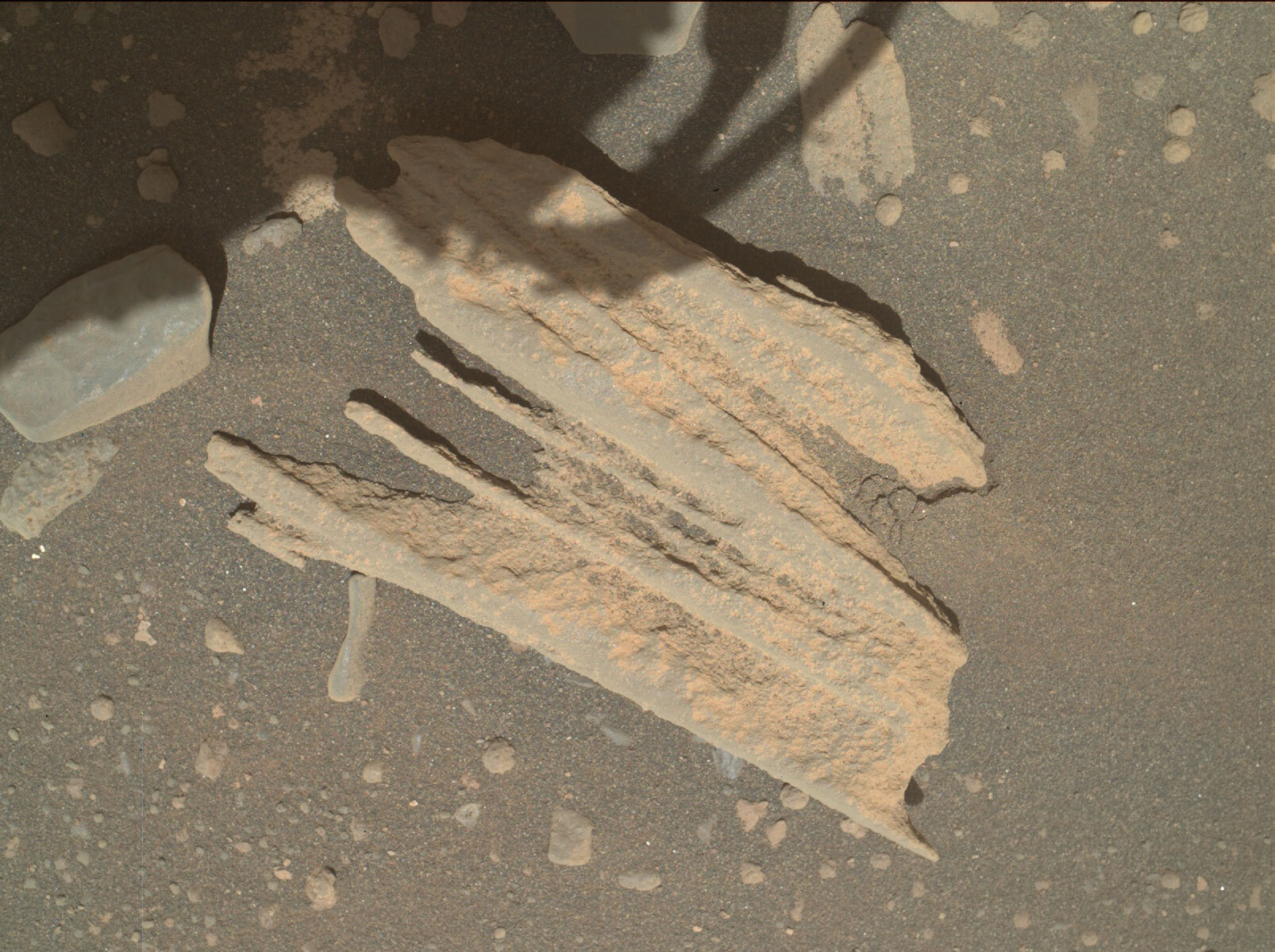2 min read

The engineers at JPL responsible for driving Curiosity yet again delivered a perfect drive to some boulders that the science team have been interested in investigating. The large boulders are thought to represent the darker, resistant rocks exposed just above us that cap the underlying less resistant, lighter coloured rocks we have been driving over. The caprocks and boulders both show two different textures; 1) layered and 2) more massive and irregular with cavities. The team want to examine these different textures in more detail and determine whether there are differences in composition between the two. We will also be able to compare the chemistry of these boulders with the pediment capping sandstones we analyzed when we first ascended the pediment. Does the more massive texture represent alteration of the layered caprock? This contact is an important one within Gale crater and represents an unconformity (a gap in time) between the underlying Mount Sharp group (laid down in lakes and rivers) and the overlying Siccar Point group (primarily wind-blown sedimentary rocks).
We are able to place the APXS and MAHLI instruments in contact with the “Yarrow Stone” target, which will allow us to examine the chemistry and close-up texture of the more massive rock. We can compare the composition with the small, layered float, APXS target, “Camusnagaul,” acquired in yesterday’s plan. ChemCam will use passive spectroscopy to examine the same “Yarrow Stone” target, and LIBS to look at another spot on the same boulder (“Avochie”), also with the massive texture. We will examine the layered, “Borve” target on the same block with ChemCam LIBS. Mastcam will acquire complementary imaging of these targets and the surrounding area. MAHLI will also image two of the layered targets (“Whaligoe Steps” and “Arainn”), which we may try to place APXS on over the weekend. To investigate the probable source area for these boulders, we plan to take Mastcam and ChemCam RMI imaging of the pediment.
Environmental monitoring activities will include a Navcam dust devil movie and line of site observation, a Mastcam tau, and SAM atmospheric observation. Standard DAN, RAD and REMS activities round out the plan.
Written by Lucy Thompson, Planetary Geologist at University of New Brunswick







